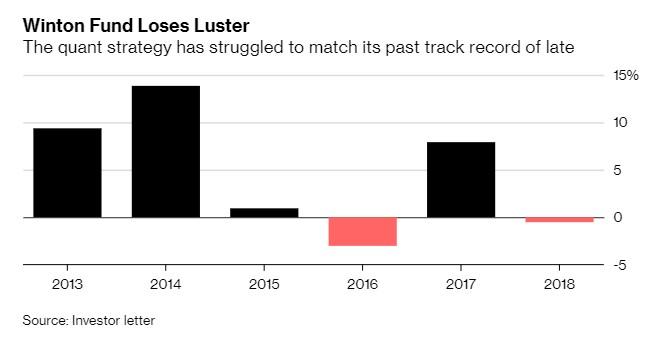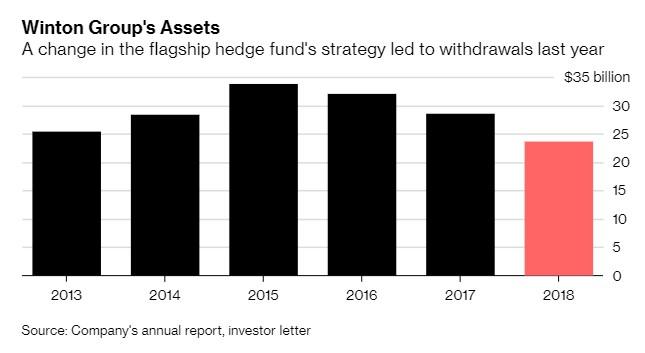The man whose quantitative models provided him double-digit returns for decades, David Harding, is finally being forced to switch his strategies. Why? Because the algorithms he built “simply don’t work anymore”, according to a new Bloomberg article.
“It’s pretty tough to make money in the hedge fund game at the moment. Quite a lot of these strategies have become crowded, more money has been squeezed into a narrower space and the return-to-risk ratio is deteriorating,” quant pioneer Harding said.
Harding follows in a long line of quantitative managers – some of whom we profiled in this recent article – that are posting sub-par returns as the quant space becomes more crowded and the market’s overall uptrend has slowed.
Now you can do quant trading “at home”, he says:
“You can do it at home. Once something becomes that easy and that accessible, then you know you’re not going to make substantial supra-normal returns doing it.”
Now, those who rely on quantitative “trend following” methods have the difficult decision of either trying to keep moving in the same direction, hoping that things will improve, or spend time and money on new strategies. Harding concluded that for his fund, the latter was the obvious move to make.

Last year, he took drastic action, slashing his “trend following” quant strategy from a 50% weighting in his flagship fund to 25% and re-writing his investing playbook. He now trades thousands of more securities and has expanded into new markets with fresh algorithms.
Harding said:
“The fees have been coming down, the asset sizes have been increasing, a lot of firms are being pushed to the wall. I’ve definitely not got my back to the wall, but I am absolutely driven to innovate and can’t afford to be complacent.”
He now trades about 7000 stocks, up from about 1500 as recently as four years ago. The firm also has a major ongoing project involving grain futures that involves time-series modeling with data stretching back more than 100 years. The firm is also studying things like weather patterns to see if there is a way to trade climate change.
But many of Harding’s clients had signed on because they wanted his traditional trend following results that have yielded positive returns in the past. Investors began to abandon him as he started to switch strategies, pulling $3.8 billion from his fund last year. The firm manages $23.5 billion, which is down from $33.7 billion in 2015.
Harding remains in a believer in the “cold truth of data”, however. He founded his first hedge fund in his 20s and was handwriting charts as a futures trader in London. It was then that he had the epiphany that manual traders could be easily beaten by computers that followed a set of rules using data.
Very early on he embraced “trend following”, a simple strategy that anticipates momentum or further price changes in one direction. He averaged 19% for two decades using that strategy.
But then, his fund fell 3% in 2016 and 5% in February of 2018, contributing to a rare down year for his clients. The fund has also not made money in 2019 yet. Harding continues to look for new niche opportunities in quant trading, and in the market, to help sustain his impressive track record of years past.
He concluded: “We definitely will discover things. The question is whether they’ll be significant or important. We hope to make world-changing discoveries, but that’s not something you can do to order.”
via ZeroHedge News https://ift.tt/2TYOmJL Tyler Durden

